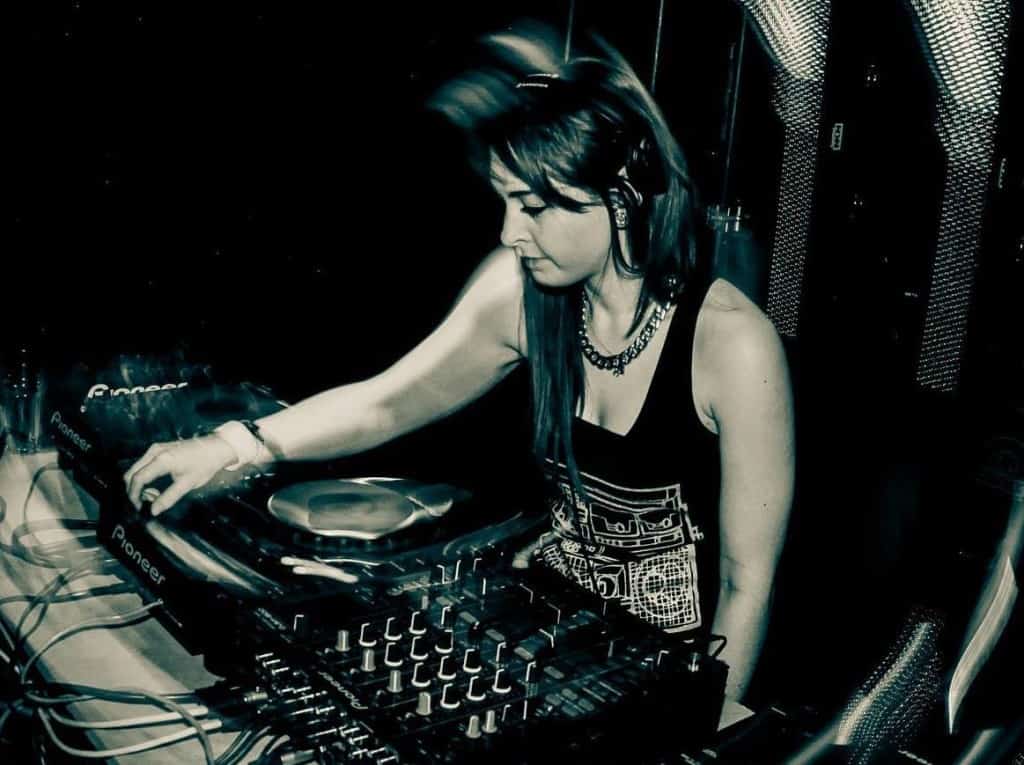Check out our mega guide for producing DnB
Drums are a big part of dance music—maybe the biggest part—because they tell dancers what to do. In Drum & Bass, drum programming and processing can make or break a track, so nailing your break is essential.
Here’s what a handful of talented DnB producers say about creating great drums. Keep in mind that good drums are good drums, so even if you don’t make Drum & Bass, these tips are still applicable.
Confluence
![]() When starting off with drums, I find a lot of people thinking they need THE perfect snare and kick drum – the overproduced, poppy, crunchy snare you hear in a lot of neurofunk and dubstep. That can give a track definition, but it is by no means necessary to make an awesome tune.
When starting off with drums, I find a lot of people thinking they need THE perfect snare and kick drum – the overproduced, poppy, crunchy snare you hear in a lot of neurofunk and dubstep. That can give a track definition, but it is by no means necessary to make an awesome tune.
Even if you have the sickest, tightest samples, it all boils down to how well placed and how well they blend together. A lot of producers forget about their drum arrangement once they have it sounding close to what they envisioned. Do not forget to keep your drums rolling – don’t be afraid to add in different kinds of percussive elements.
An interesting blending technique, not sample-wise, but rather with transitions is to add a stereo enhancer to your higher-frequency samples – I mostly use this on cymbals, but you can use it on other elements like the top end of your snare, or even bass. I don’t mean just smack it on a bus and let it sit there – automate the dry/wet of your plugin and even the parameters within the plugin. This is useful for creating loose space when you don’t necessarily want to use reverb, yet it is also very effective when paired with reverb. Use this for build-ups or creating some movement and depth to a transition within the tune.
Disprove
![]() Use return tracks to give more color and presence to your drums.
Use return tracks to give more color and presence to your drums.
Send the whole drum buss channel to one return track using a transient modulator with an extreme sustain setting and crush the output into a saturator/exciter. Send the kick and snare to another return track using a transient modulator with a strong attack setting. Slowly turn up the levels and add them to your mixdown.
Euph
![]() Don’t be afraid to make sounds that you would call ‘unusable’. Making a sound that’s completely different to anything else out there is one of the most powerful ways to make your tracks stand out from the rest. Go crazy – put effects on drums that you would normally put on other things like FX or vocals, save some FX chain presets from your bass resampling and try them out on a break or some hats.
Don’t be afraid to make sounds that you would call ‘unusable’. Making a sound that’s completely different to anything else out there is one of the most powerful ways to make your tracks stand out from the rest. Go crazy – put effects on drums that you would normally put on other things like FX or vocals, save some FX chain presets from your bass resampling and try them out on a break or some hats.
The more imaginative and ‘insane’ you can be when processing your drums, the more that uniqueness will shine through in the sounds you end up with. And if you end up with a sound that is mutilated to the point where you can’t use it in a track, you can always EQ things out and tone it down to a point where it fits (or failing that, make a new track based around this new sound).
And finally, never underestimate what a good foley layer can do to your drum tracks!
Mr Crux
 Pitch and frequency layering is my go-to technique. Pitch layering is layering the same sample or break multiple times at different pitches, mixing them together as you’d see fit. Frequency layering is identifying what’s lacking in your drums as they stand, and filling them out.
Pitch and frequency layering is my go-to technique. Pitch layering is layering the same sample or break multiple times at different pitches, mixing them together as you’d see fit. Frequency layering is identifying what’s lacking in your drums as they stand, and filling them out.
Typically I find that there’s too much high end in my snares, so I’ll source out a sample of a snare that has plenty of meat in the 150 – 200Hz range and mix it in, so it stands out and sounds fluid with the kick (I find a lot of bad drum processing is the result of the poor relationship between the kick and the snare, a low kick transitioning into a high snare will always sound out of place to my ears. 100hz kick to a 200hz snare is ideal).
If your drums are lacking any life in the high end, layering breaks with plenty of splashy cymbals with their lows cut out, then mixing them in subtly behind the break can be the perfect filler.
Deem
![]() A ghost kick, with the same principle behind it as a ghost snare. Bounce your kick out and chuck it back into the project, but pitched up an octave/shortened 50% and litter these around the break. Sometimes you can make another one shortened 25% and put them in there too. This is good if you want a hectic sort of track but can’t seem to get the speed out of it with just quick hats & percussion. In the right context it gives it a bit of a Billain feel, he has heaps of kicks everywhere.
A ghost kick, with the same principle behind it as a ghost snare. Bounce your kick out and chuck it back into the project, but pitched up an octave/shortened 50% and litter these around the break. Sometimes you can make another one shortened 25% and put them in there too. This is good if you want a hectic sort of track but can’t seem to get the speed out of it with just quick hats & percussion. In the right context it gives it a bit of a Billain feel, he has heaps of kicks everywhere.
Also, I always have trouble making interesting high hat/percussion loops (besides the usual 8th or 16th notes hats) to go with the kick and snare, so what I do is take a loop and try and copy what’s going on in there. Heaps of sample packs come with tops loops now, like the BHK and Emperor & Centra packs with nothing but percussion and cymbals in them, so take one and recreate it. Listen for what types of sounds they’re using, where they’re repeated, etc. Somewhere along the line you’ll end up making something totally different because what works in the loop may not work with the kick & snare you got going.
Last tip (which isn’t a tip) is to get Luthatrons hat, snare and kick pack.
It’s got every single crusty old ass hat you could ever want; thousands of samples in there.
Kyrist
![]() Always use stereo imaging/stereo spread on high frequency sounds, i.e hats/. It’s always good to get a few in there to make the mix sound fuller and wider—I find it helps to shut your eyes when using stereo spread to focus on what you can hear rather than what should ‘technically’ be right.
Always use stereo imaging/stereo spread on high frequency sounds, i.e hats/. It’s always good to get a few in there to make the mix sound fuller and wider—I find it helps to shut your eyes when using stereo spread to focus on what you can hear rather than what should ‘technically’ be right.
What tips do you have for drum programming and/or processing? Comment below!

